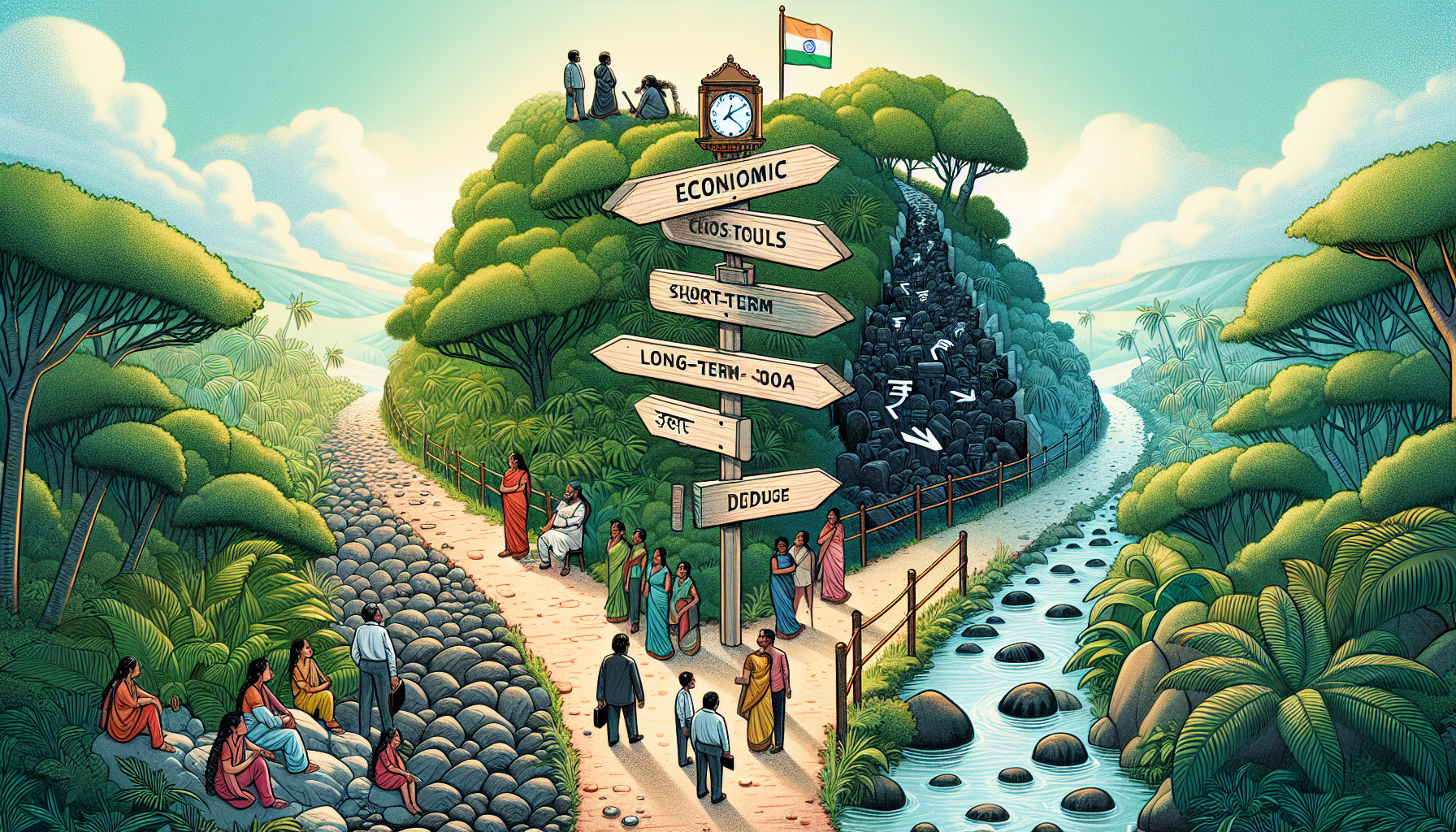Navigating India’s Economic Puzzle: Modi’s Dilemma
In the bustling city of Mumbai, a vibrant fruit market thrives—a symbol of India's relentless drive for economic prosperity. However, beneath this colorful facade lies a complex situation that Prime Minister Narendra Modi is striving to manage. As India approaches its budget day, an intricate blend of political maneuvering and economic strategy takes center stage.
The Budget and the Blessings of Lakshmi
Ahead of the highly anticipated fiscal announcement on February 1st, Modi reached out not just to his constituents, but also to Lakshmi, the Hindu goddess of wealth, in a bid for divine support. The prime minister's approach captures a dual essence: addressing the immediate needs of the populace while strategically positioning himself politically. His recent electoral setback, partly a result of public discontent over stagnant growth and job scarcity, pushes economic recovery to the forefront of his agenda.
A Middle-Class Windfall
In the latest budget reveal, Finance Minister Nirmala Sitharaman delivered tax cuts totaling approximately 1 trillion rupees annually, a move designed to relieve millions of middle-class earners from the burden of income tax. This decision underscores a strategic shift, aiming to inject immediate spending power into the economy, thus stimulating short-term growth.
Short-Term Gains vs. Long-Term Reforms
While these tax reliefs may offer a short-term boost, economists argue that they are merely a surface solution. Deep-rooted structural reforms are crucial for sustainable economic growth. Modi’s administration faces the challenge of implementing measures that go beyond ephemeral benefits. Addressing underlying issues such as infrastructure development, regulatory reforms, and boosting industrial productivity remains essential for crafting a resilient economic landscape.
The Political Implications
These economic maneuvers are not occurring in a vacuum. Modi's administration balances fiscal measures with political calculus. By alleviating the financial strain on the middle class, the government seeks to regain electoral ground lost during the last elections. However, whether these efforts suffice to revive Modi’s popularity and secure long-term economic success is yet to be seen.
A Global Perspective
India's economic narrative unfolds against a backdrop of global economic complexities. From geopolitical tensions impacting trade to climate change necessitating a shift towards sustainable resources, Modi's economic strategies must align with broader international dynamics. The interplay between national policy and global economic trends will be pivotal in shaping India's future.
As India forges ahead, the path remains riddled with challenges and opportunities. The success of Modi’s economic agenda will depend on careful orchestration of immediate fiscal relief and strategic, sustainable reforms. While tax cuts provide temporary relief, the broader narrative of India’s economic resurgence lies in fostering innovation, enhancing infrastructure, and embracing global economic shifts. In this intricate dance of policy and politics, the direction India takes will not only shape its own destiny but also resonate on the global stage.
